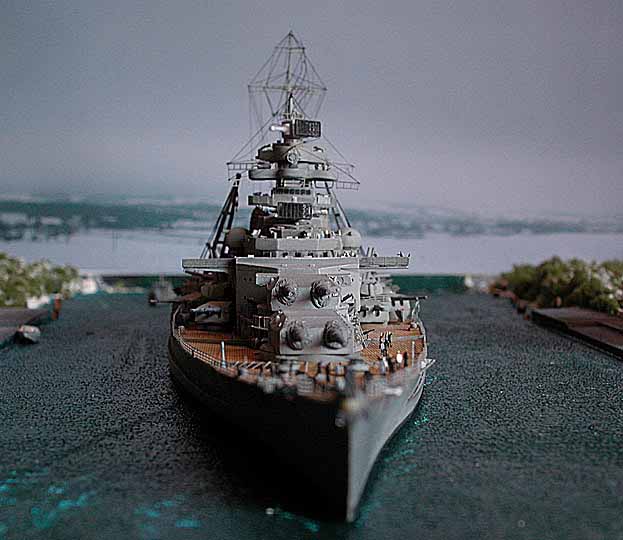Kiel Canal 1941

by Patrizio Carlucci

| Often driving from Germany to Denmark for business reasons, the Kiel canal, especially in winter, always tempted me as a stage for a diorama. Before even thinking about probably the most important vessel that ever passed through it, after having built the Gorizia and gaining some confidence with resin, I felt to get into this epic adventure: The Bismarck in the cold March of 1941 on her final trip to Kiel through the canal, before getting her final camouflage. She (He), in my opinion and in those circumstances, deserved maximum respect and accuracy. So many people dedicated a good part of their life researching the subject under every possible aspect that I really feel grateful for the quantity of information shared. Considering myself a rookie in the hobby, this being my second resin kit, I started working on the model a couple of months ago. Besides a lot of normal design work and family, I got seriously stuck into the project. | |||||||
|
|||||||
| The Diorama:
The base is a picture frame, the glass being the base of the oil painting representing the water. Multiple layers of Future for glossiness. There is a layer of creased aluminum foil behind the glass that is hard to notice on the pictures but in real life renders a good 3D effect behind the transparent oil paint layer. The banks are formed from normal white plaster, the vegetation is the only one I have found able to work at 1/700 after a long quest in the incredible quantity of railways' modeling stores in Germany. The docks are in resin from H-P Models (Germany). |
click images
to enlarge |
||||||
 |
|||||||
 |
|||||||
|
|||||||
Instead of a thousand words, I have taken some shots before the final result so to have an idea of the details added or scratch-built. Sameks' Bismarck is an excellent model that even after paint, weathering and dry brushing seemed tremendously bare to my eyes as seen in the photos. |
|||||||
|
|||||||
| Here is a list of the material used:
Gold Medal Models: WW2 German warships - Watertight doors - Extra ladders - Figures - Cable reels - Anchors - Flag decals. Tom's Modelworks: Bismarck-Tirpiz set - Rail netting – figures. H-P Models: Seebaer tug - German Navy Hafenlagen. Samek: R 3-7 minesweepers-patrol boats (2X per kit). MMN (Italy): White metal beautiful 1/700 miniatures of Tiger I, Pzw. IV and Famo. Skywave: European building. Pit Road: Equipment for IJN vessels ! (mainly paravanes and fire
hoses). The searchlights covers are cable reels wheels from the provided
PE.
|
 |
||||||
 |
|||||||
| The Bismarck overall gray is RAL 7001 (155) Vallejo acrylic.
|
|||||||
|
|||||||
| Saluti,
Patrizio Carlucci 3darts.com |
|||||||
